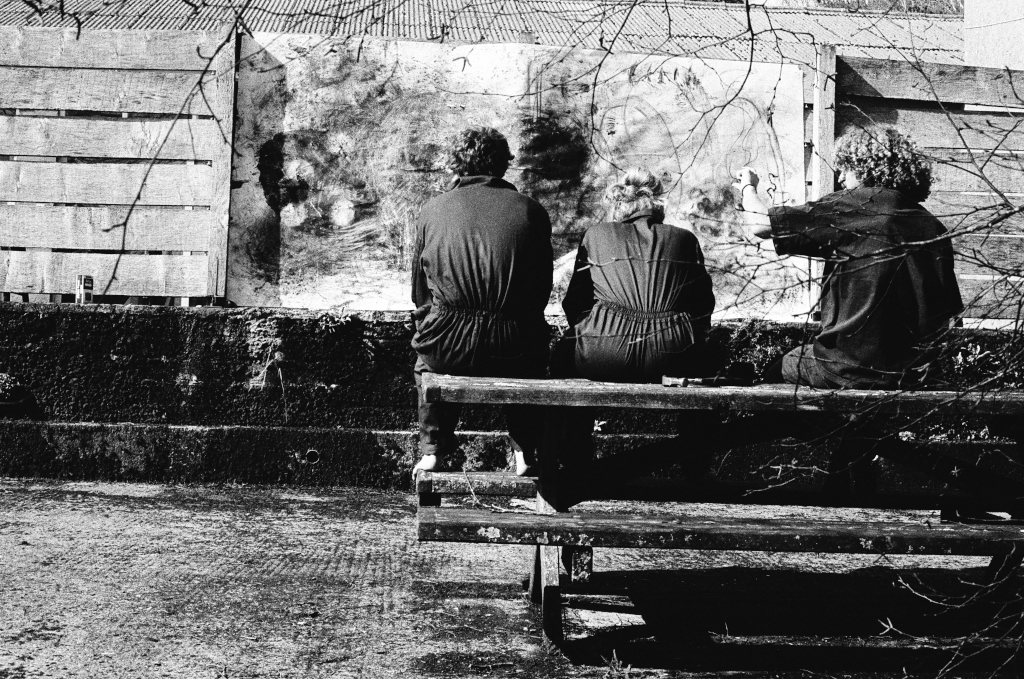On March 17 at the Shippon Artists Studios, Dartington Estate, Devon, there was the second residuals performance – Residuals #2. A co-created charcoal drawing was produced as well as a performance by its four artists – which included me.
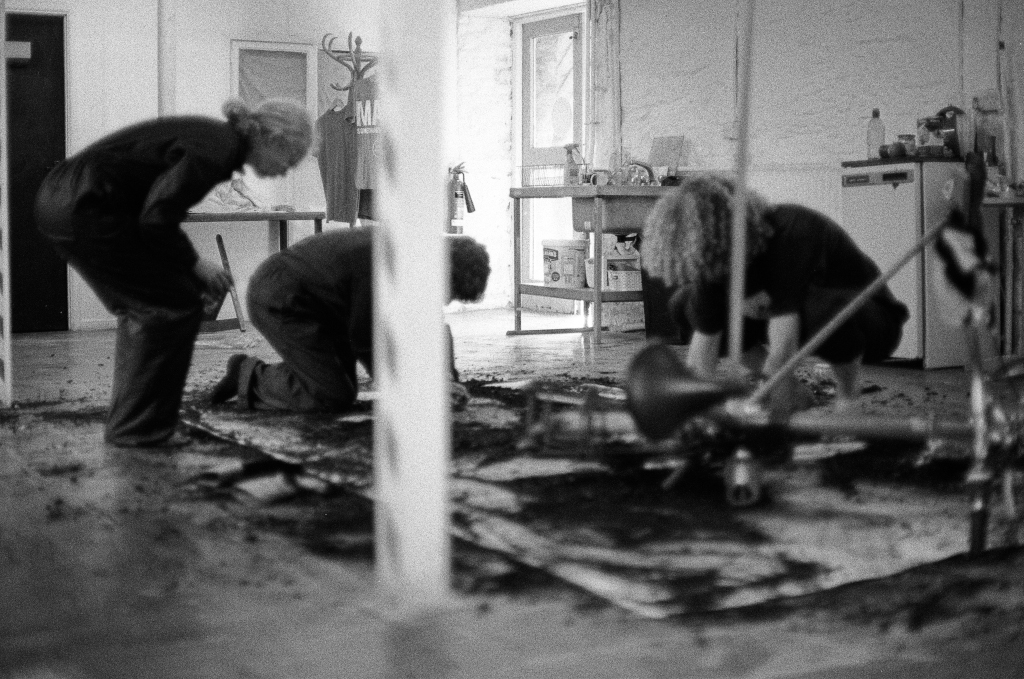
The first residuals performance – Residuals #1 – with me and artist John Hazel was – in terms of movement – a duet.
In the second performance, there was an ensemble: Thom Blane, John Hulme, Stephanie Gotlobb and me – Andrew Wood. Four artists in all. The Shippon Artists Studios at Dartington where Thom is based, gave us a perform venue.
Setting the stage

The performance was once again improvised. The floor was set with paper and charcoal granules where moved on its surface by the performers. The artists brought their interests and previous practice into the new performance with me.
When artist John Hazel and I worked on Residuals #1 then we alternated the movement on the paper in a very polite manner, almost taking turns to enter, move and mark-make or dance-make. Initially, the charcoal was poured and scattered onto the paper, whereas in Residuals #2, the bag of charcoal was introduced at the beginning and it became an object with which we four performers interacted until it was opened and spread.
Residuals #2 then it was much less formal and the dancers or performers, followed their own interest. It was a non-verbal dialogue between us – a dance! In the briefing prior to it, I’d emphasised the practice of contact improvisation as an integral part of the practice. It was a performance practice familiar to the others though they perhaps had not considered themselves in the dance tradition. They knew each other from the Movement and Ecology post-graduate degree at Schumacher College, Dartington.
Props

A bicycle, mop and mirrors were included in Residuals #2. They were present in the studio as ‘found objects’ rather than being provided. Theses were tools for articulating the charcoal and/or as artefacts or props in the performance. There was no score or similar used to assist in the performance composition although there was a briefing about the previous performance and photos where shared too. At times, the paper seemed almost crowded – it was the same size as previously – about 3 by 1 metres but now with four artists instead of two artists working it.
The mark making included the use of wire wool which was highly abrasive and really ‘let the light in’ to the blackened paper. As in Residuals #1, water was introduced mobilising and fixing the charcoal. The blackest marks were from the water and charcoal together.
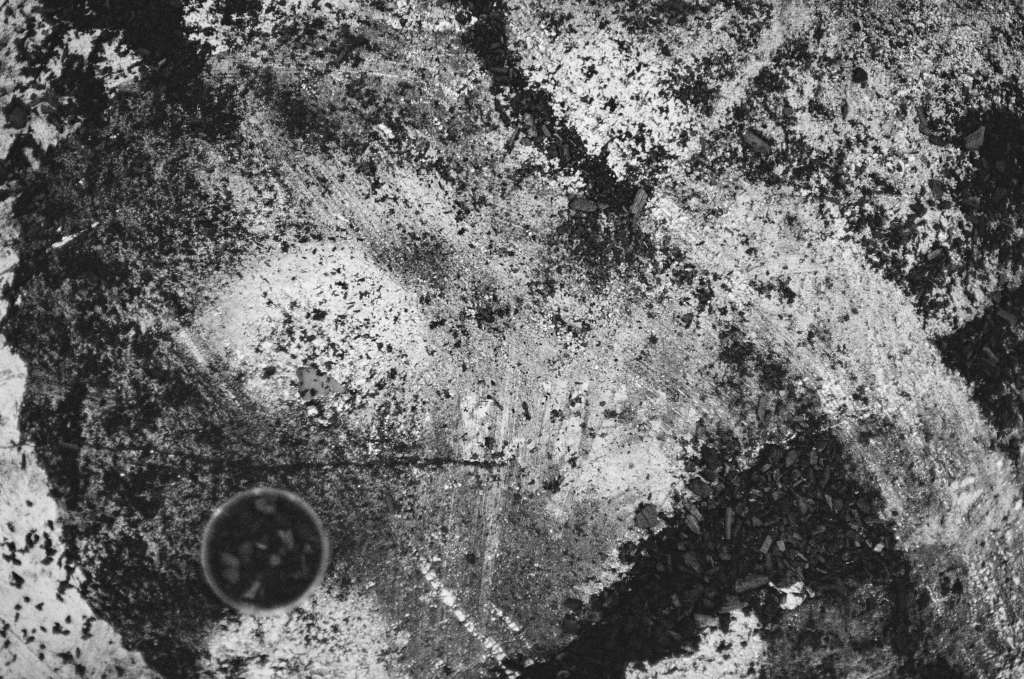
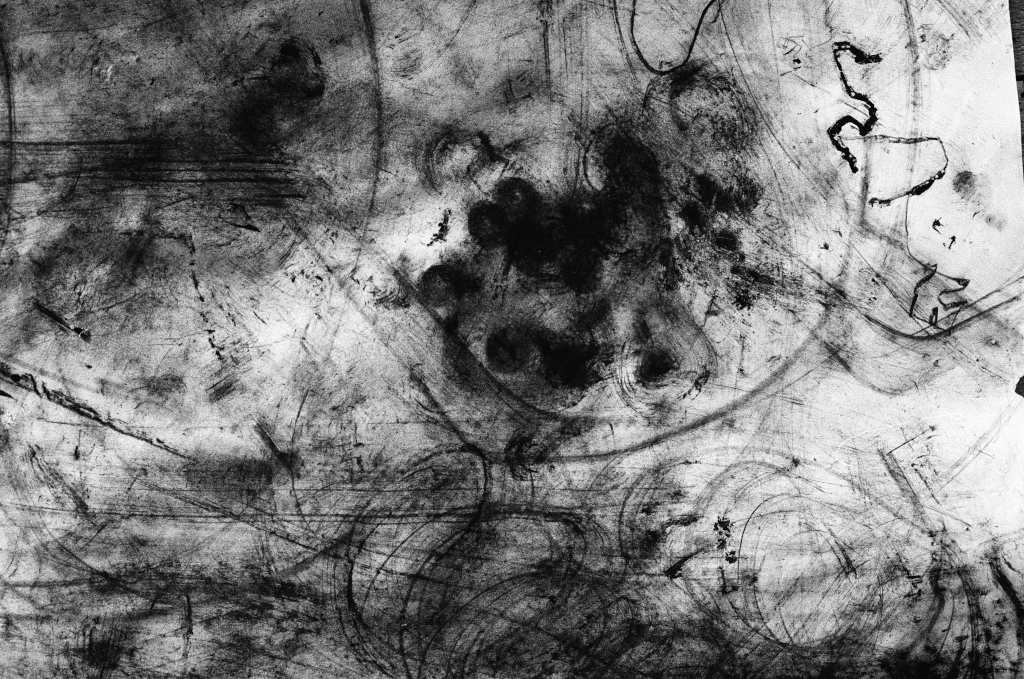
Once the performance ‘drawing’ on the paper was completed then it was hung in the courtyard to dry and for us to view the whole of it. The sweeping of the residuals from the floor and their deposition was an art-work in itself. Sunlight through the window illuminated the floor. Once again, I am reminded that both this and the work on paper were equally fin’drawing’ished or indeed unfinished work. Similarly, our movements too: preparing the studio; carrying the paper; sweeping the floor are all movement and equally valued.

Unification of artefact and performance
The performance and its charcoal drawing seem to be distinct but are they really? The drawing as an artefact is viewed by a spectator. Hence one engages in the act of viewing. That is a performance.
When we sat in the courtyard, looking at the drawing hung on the fence then we had become spectators in a ‘spectators performance’: as if the public viewing an art work hung in a gallery. When does the performance start? When does the performance end?
The drawing as an artefact ‘a product’ comes after the performance; it seems consequential. Is it that ordering of time which creates a product? Of course, we also call performances, a production. Where does this want to make ‘products’ come from?
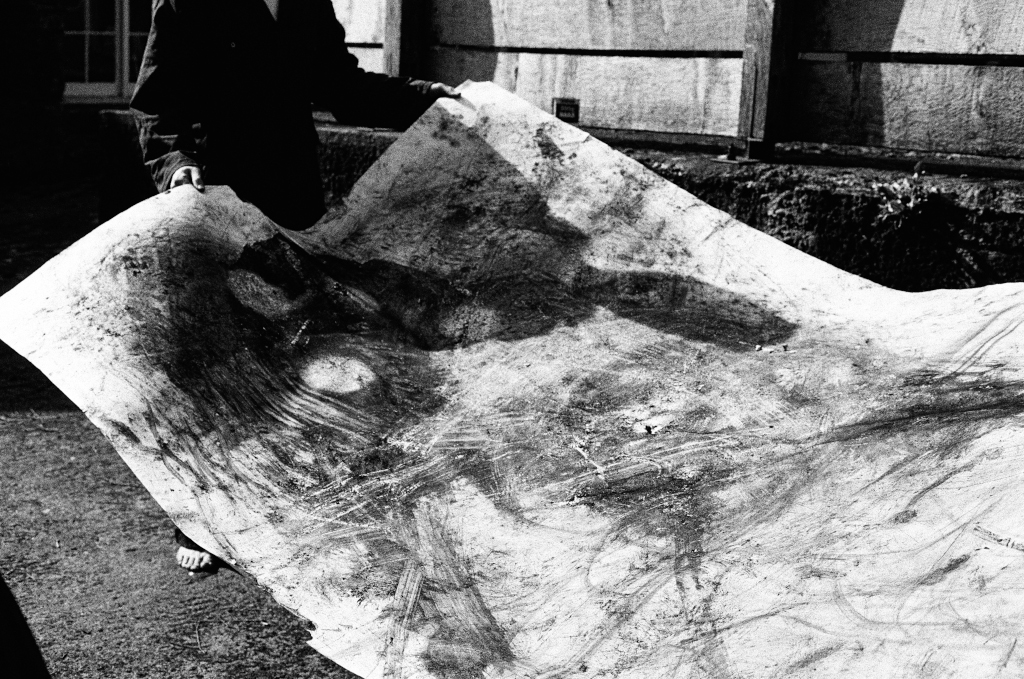
There really isn’t a separation between the performance and the artefact: one must interact with the artefact as a viewer. It seems that permanence and causality – both abstracts – are concepts that create distinction.
But there is the also feel of the artefact in ones hand too. Our sensation of it. Our embodiment. The performance lacks that, slipping through our hands as time itself.
